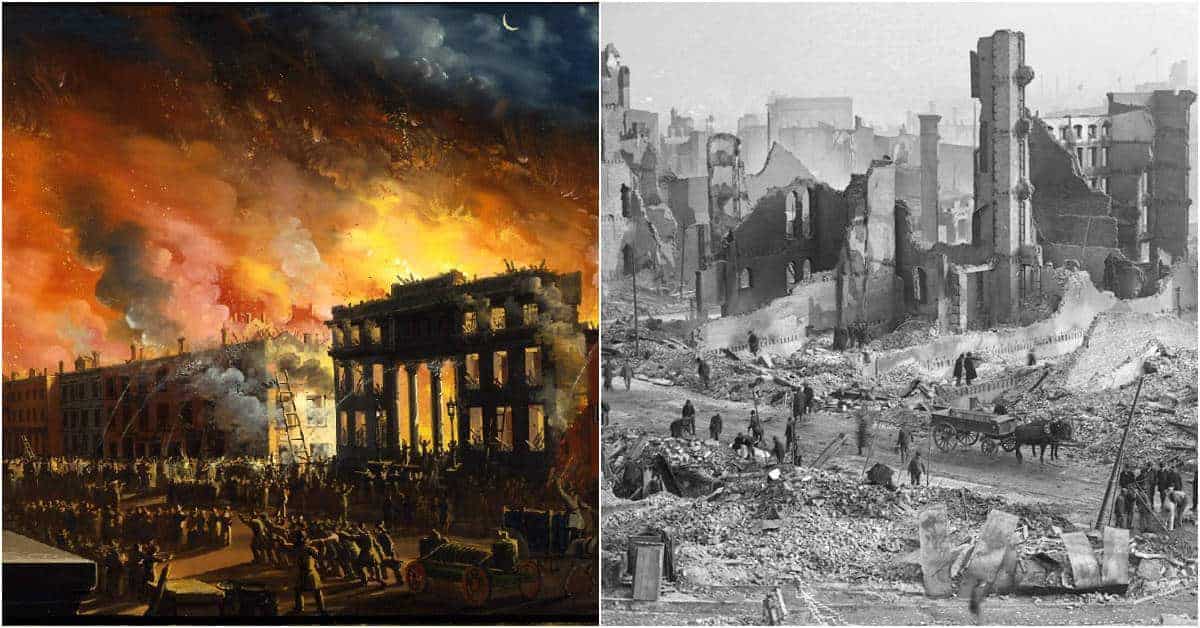According to the ancient Greeks, it was the Titan Prometheus who gave humanity the gift of fire after stealing it from Mount Olympus, an act for which he was made to suffer eternal torments. Fire is the cornerstone upon which human civilization is built, a tool from which all other tools have emerged, but it remains one of the most potentially destructive forces on earth.
Disastrous fires have plagued the human race throughout recorded history, leveling forests, fields, and cities. Some have been created by human error, some by human malice, and some by nature. Mankind has learned to use fire to prepare his food, warm his home, and rain it down upon his enemies.
History is liberally dotted with disastrous fires, some legendary. Modern scholars dispute the popular notion that Nero fiddled while Rome burned in 64 AD, for example, an event frequently depicted in film and literature. Mrs. O’Leary’s cow accidentally starting the Great Chicago fire is disputed today, although most agree that the fire started in the vicinity of the O’Leary family property on DeKoven Street.
Lesser known than the Great Chicago Fire are the three separate occasions when New York was ravaged by urban conflagrations in 1776, 1835, and 1845. The year 1845 saw nearly a third of Pittsburgh destroyed by fire, an event that actually spurred further growth. Jacksonville Florida had its turn too, in 1901, a tragedy largely forgotten despite its being the third worst urban fire in American history.
Here are nine urban fires which destroyed large areas of American communities, some of which are nearly forgotten by time.

New York, 1776, 1835, and 1845
In 1776 the City of New York – called York City by most – was huddled near the southern tip of Manhattan Island. In September the city was occupied by the British Army after it decisively defeated George Washington’s Continental Army at the Battle of Long Island. Valued for its harbor, New York was to be the center of British operations for the remainder of the American Revolution.
The city contained a large contingent of Loyalists, and it is believed that the fire, which began in a tavern near the waterfront, was started to destroy Loyalist businesses and homes. Between 10% and 24% of the buildings in the city were destroyed by the fire which burned for two days before a change in winds forced the fire in a direction in which it ran out of fuel. The famed Trinity Church was among the buildings destroyed; it was later rebuilt.
By 1835 New York was the leading city in America and experiencing an economic boom. New York established firefighting capabilities, including water reservoirs and cisterns, but the size of the fire department and the sprawling nature of the city’s growth rendered it insufficient. When fire broke out in a warehouse near Wall Street and Hanover on December 16, most of the water available to fight it was frozen.
Driven by gale force winds, the fire spread towards the East River, its glow visible as far away as Philadelphia. Before it was brought under control by firemen and US Marines – who blew up buildings in its path with gunpowder – 17 city blocks and up to 700 buildings were leveled. The destruction led to many of the destroyed wooden buildings being rebuilt with brick and stone.
Ten years later the city was again struck by a major fire, this time starting in a warehouse which stored whale oil, then used as the primary source of lighting in businesses and homes. Burning for nearly twelve hours in what is now the Financial District of Manhattan, 345 buildings were destroyed before firefighters from New York, aided by volunteers from Newark and Brooklyn, brought it under control. Some of the water used to fight the fire came from the Croton Aqueduct, built largely for the purpose after the 1835 fire. At least 26 civilians and four firefighters were killed and in some cases, their bodies were never found.

